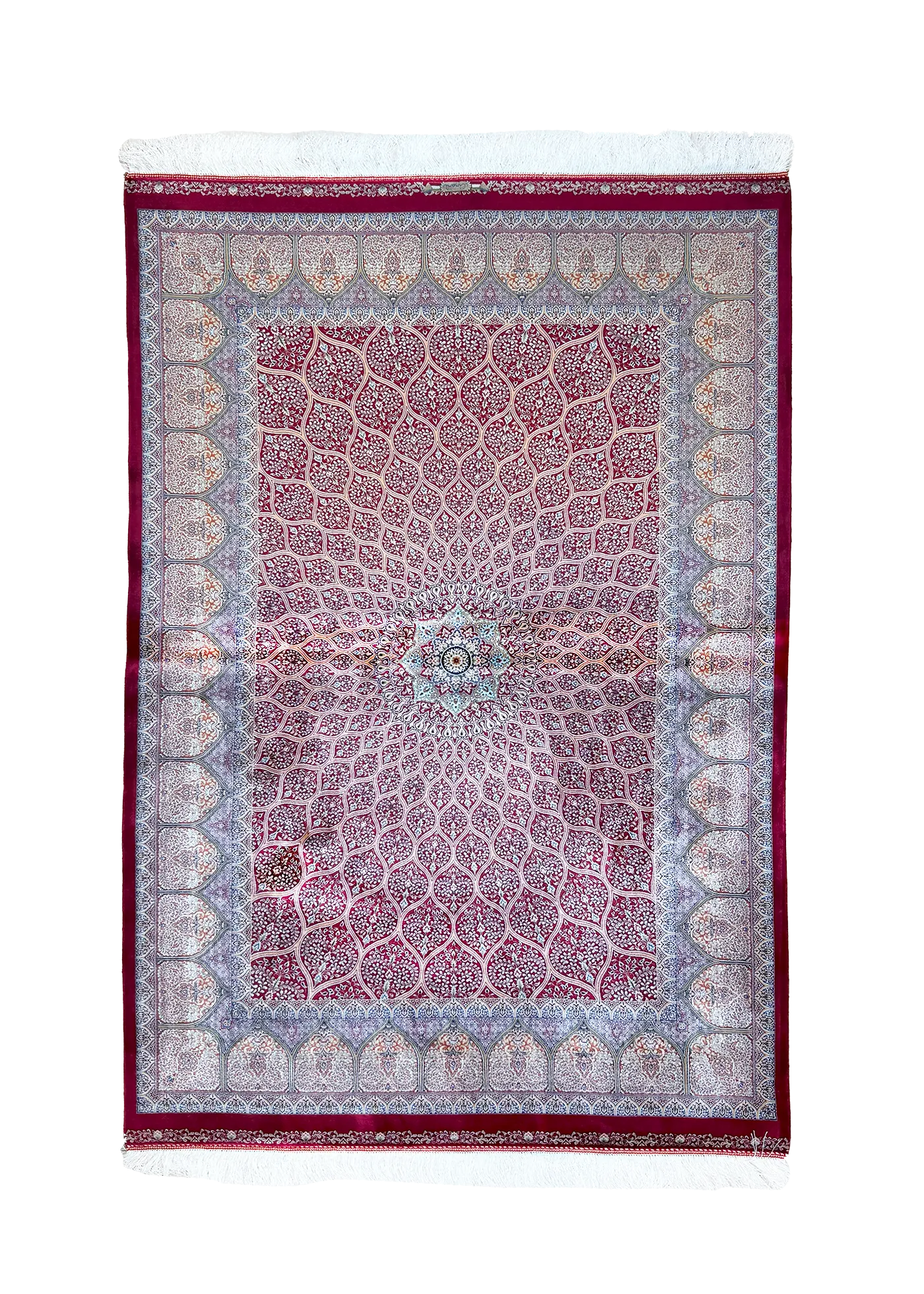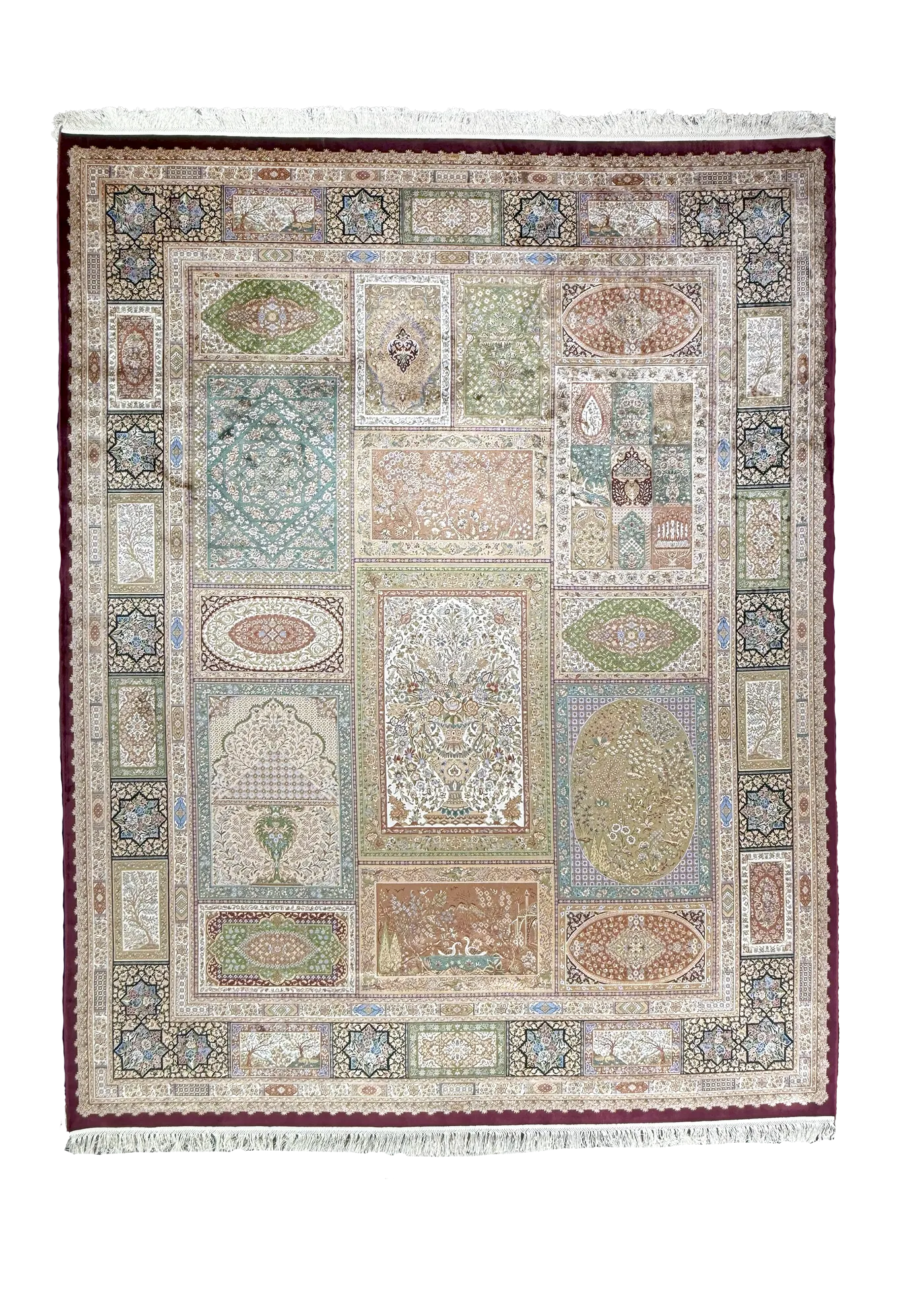Antique Persian Area Rugs: A Tapestry of History and Art
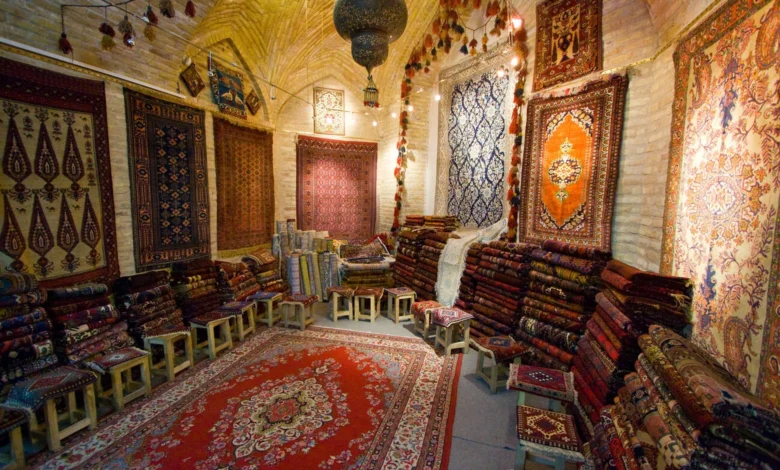
- 1 Red and Blue Persian Rug Vanda Pattern 5 x 8
- 2 Introduction:Antique Persian Area Rugs
- 3 The Historical Journey of Antique Persian Area Rugs
- 4 Craftsmanship Behind Antique Silk Persian Rugs
- 5 The Cultural Heart of Antique Persian Area Rugs
- 6 Why Antique Persian Area Rugs Still Captivate
- 7 Infographic: The Legacy of Persian Area Rugs
- 8 FAQ: Antique Persian Area Rugs
- 9 Conclusion: Antique Persian Area Rugs
Introduction:Antique Persian Area Rugs
Picture yourself in a dimly lit gallery, where an antique Persian area rug sprawls across the floor. Its deep reds and blues glow like a storybook come to life.
These rugs, woven centuries ago, hold secrets of artisans who poured their hearts into every knot. Antique Persian area rugs aren’t just decor; they’re time capsules.
They carry the essence of ancient Persia, whispering tales of a vibrant past. In this article, we’ll dive into their history, craftsmanship, and enduring charm.
We’ll draw on insights from BBC Culture’s exploration of their timeless appeal. If their intricate designs enchant you or their past sparks your curiosity, discover why these rugs remain treasures.
At Afra Rugs, we celebrate this legacy with our Vintage Persian Rugs Collection. Our rugs draw inspiration from the elegance of antiques, infusing your home with history.
The Historical Journey of Antique Persian Area Rugs
Antique Persian area rugs emerged from Persia’s vibrant history, particularly during the Safavid dynasty (1501–1736). Rug-making became a celebrated art, showcasing the weaver’s skill.
These rugs adorned palaces and mosques, reflecting their cultural importance. “Persian carpets are among the most outstanding expressions of Islamic art,” notes BBC Culture (BBC Culture, The Timeless Appeal of the Persian Rug).
Cities like Tabriz and Isfahan became hubs for these creations. They produced rugs that traveled global trade routes, spreading their fame.
By the 19th century, Persian rugs captivated European collectors. Their intricate designs and rich colors made them symbols of luxury.
Each rug bore the mark of its region, from Kashan’s floral elegance to Shiraz’s bold tribal patterns. These pieces weren’t mere furnishings; they were cherished heirlooms.
Their lasting beauty inspires modern designs, like those in our Vintage Persian Rugs Collection. Explore these timeless styles today.
Table: Key Eras of Persian Area Rugs History
| Era | Significance | Notable Features |
| Safavid (1501–1736) | Peak of artistic rug-making | Intricate floral motifs |
| Qajar (1789–1925) | Rise in global trade | Bold colors, regional styles |
| 19th Century | European fascination grows | Tribal and geometric patterns |
Caption: A snapshot of antique Persian area rugs through history, highlighting their evolution.
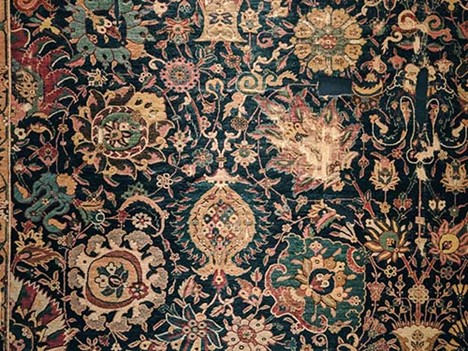
A vibrant Persian area rug with swirling floral designs, capturing Safavid artistry. Photo by Kadir Celep
Craftsmanship Behind Antique Silk Persian Rugs
The magic of antique silk Persian rugs lies in their craftsmanship. Weavers spent years hand-knotting each piece with remarkable precision.
They created intricate patterns, blending silk for its sheen and durability. While Afra Rugs uses bamboo silk with hand-finished touches, antiques showcase a unique luster.
“A Persian rug is a dialogue between the weaver and the material,” explains BBC Culture. This captures the artistry involved in every knot (BBC Culture, The Timeless Appeal of the Persian Rug).
Patterns define these rugs’ allure, like the Herati design with its repeating floral diamonds. It evokes harmony, drawing the eye with elegance.
The Boteh, or paisley, curls like a flame, symbolizing life. Medallion patterns, bold and symmetrical, anchor a rug’s design with balance.
These motifs, born from regional traditions, continue to inspire modern designs. Explore similar elegance in our Vintage Persian Rugs Collection.
Top Patterns in Antique Silk Persian Rugs
- Herati: Floral diamonds, symbolizing balance and unity.
- Boteh: Paisley shapes, representing eternal life.
- Medallion: Bold central motifs, showcasing symmetry.
- Tree of Life: Branches and blooms, evoking growth.
The Cultural Heart of Antique Persian Area Rugs
Antique Persian area rugs are woven with cultural meaning. In Persian homes, they symbolized warmth and hospitality.
They graced floors of tents and palaces alike, reflecting tradition. Their designs carried stories, rich with symbolism.
Floral motifs mirrored paradise gardens, a nod to Persian poetry. Geometric patterns reflected tribal identities, each knot a piece of heritage.
BBC Culture notes that these rugs were “a canvas for cultural expression.” They blend art and tradition seamlessly (BBC Culture, The Timeless Appeal of the Persian Rug).
Colors added depth to their stories, like red hues speaking of courage. Blues whispered calm, evoking serenity.
A silk Persian rug might shimmer like starlight, tying the earthly to the divine. These layers make antiques cultural treasures.
They inspire modern designs, like those in Afra Rugs’ Vintage Persian Rugs Collection. Discover their timeless charm today.
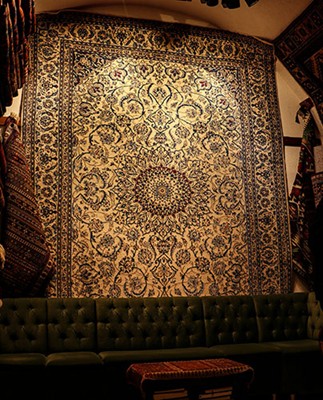
A silk Persian rug with a glowing medallion design, rich with cultural motifs. Photo by Aslı Yaren Peker
Why Antique Persian Area Rugs Still Captivate
Antique Persian area rugs endure because they marry beauty with history. Their intricate patterns fit seamlessly into modern homes.
From sleek lofts to cozy retreats, they add timeless charm. A silk Persian rug catches the light, bringing elegance to any space.
Their versatility makes them timeless, transcending fleeting trends. BBC Culture observes, “Persian rugs remain relevant because they transcend trends” (BBC Culture, The Timeless Appeal of the Persian Rug).
Beyond aesthetics, these rugs carry deep emotional weight. Owning one feels like safeguarding a piece of history.
It’s a connection to artisans of centuries past, woven into every knot. Their durability ensures they last, outshining modern decor fads.
At Afra Rugs, we draw on this timeless appeal. Explore our Vintage Persian Rugs Collection to bring history home.
Infographic: The Legacy of Persian Area Rugs
Description: This infographic traces the journey of Persian area rugs from Safavid artistry to 19th-century global fame. It highlights key eras, patterns like Herati and Boteh, and their cultural significance. A visual timeline showcases milestones, like the rise of Tabriz rugs. Infographic by Afra Rugs.
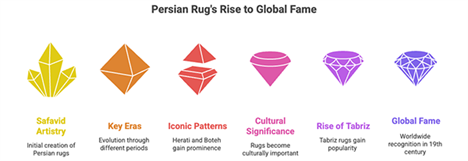
The Legacy of Persian Area Rugs. Infographic by Afra Rugs
FAQ: Antique Persian Area Rugs
- What defines an antique Persian area rug?
An antique rug is over 100 years old, often from the Safavid or Qajar eras, featuring hand-knotted designs and natural dyes.
- Why are silk Persian rugs so special?
Their fine weave and shimmering silk create intricate, durable patterns. The sheen adds a luxurious glow to any space.
- How do I recognize an authentic antique Persian area rug?
Look for hand-knotting, natural dyes, and patterns like Herati or Medallion. Experts can confirm authenticity.
- Do antique rugs suit modern interiors?
Yes! A silk Persian rug blends timeless elegance with modern decor, adding warmth and character.
- Where can I find rugs inspired by antiques?
Check out Afra Rugs’ Vintage Persian Rugs Collection for designs that capture the charm of antique Persian area rugs.
Conclusion: Antique Persian Area Rugs
Antique Persian area rugs weave together history, art, and culture. Every vibrant thread tells stories of beauty and tradition.
From Safavid palaces to modern homes, their patterns endure. They remain timeless treasures, beloved by all.
Whether it’s a silk Persian rug shimmering with paisley motifs or a bold medallion design, they captivate. Their charm bridges past and present effortlessly.
Collectors and homeowners alike cherish their unique appeal. They connect us to a rich, artistic heritage.
At Afra Rugs, we honor this legacy with inspired designs. Our pieces echo the elegance of antiques.
Discover the timeless beauty of our Vintage Persian Rugs Collection. Bring a touch of history to your space.
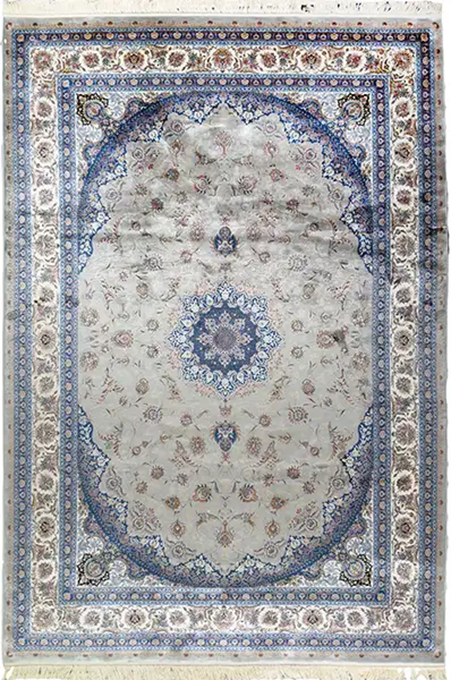
Gray and Blue Silk Persian Rug Espadana Pattern. Photo by Afra Rugs


